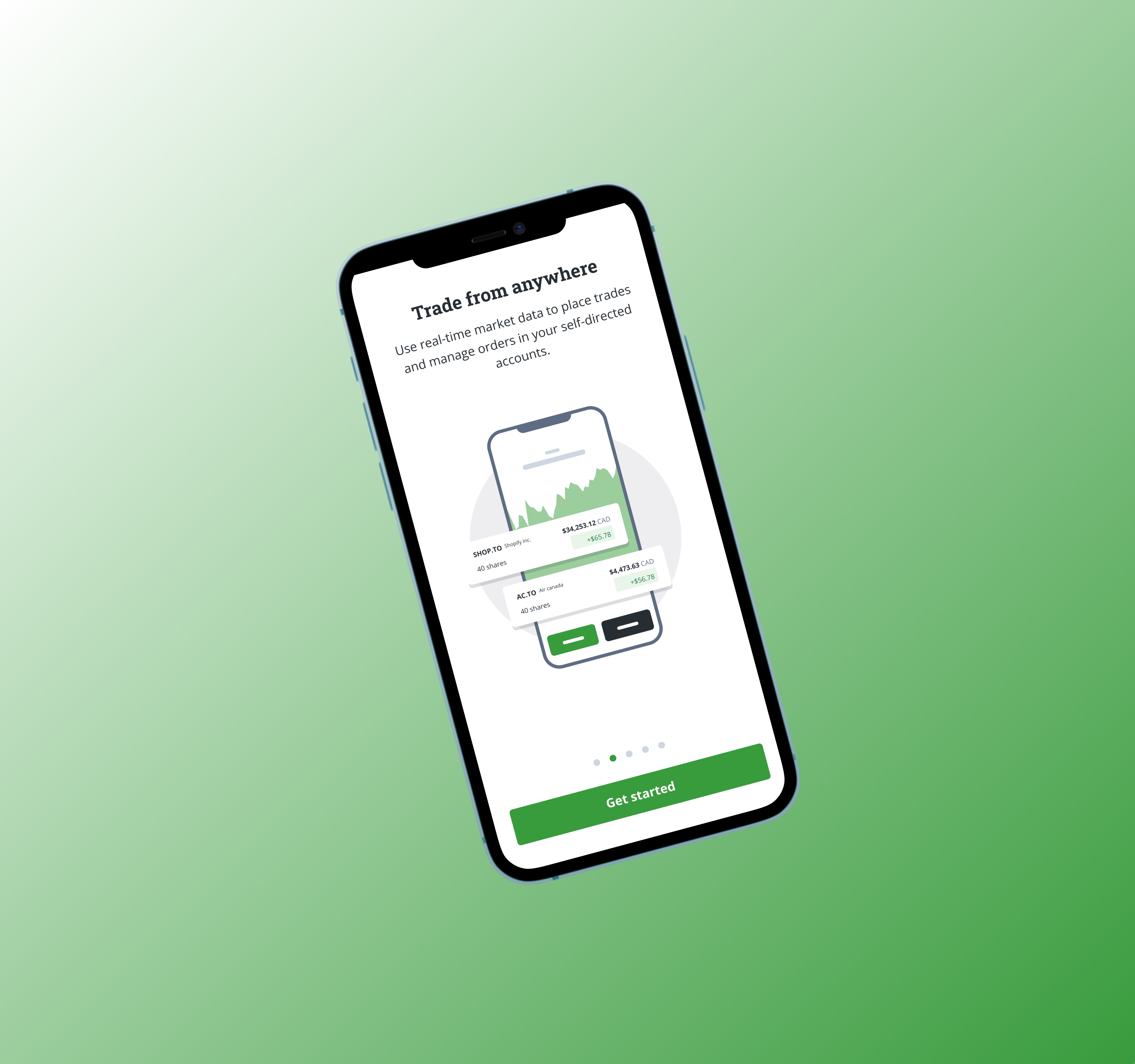As consumers increasingly expect seamless digital experiences across all aspects of their lives, financial institutions face mounting pressure to provide intuitive, accessible services that meet modern expectations while maintaining security and trust.
This project focused on redesigning Questrade's mobile account opening and bill payment experiences, addressing key usability pain points while maintaining security requirements. The goal was to create a more streamlined experience that would reduce customer service inquiries and improve user satisfaction.
The Problem
Questrade was experiencing a high volume of customer service tickets related to mobile account opening and bill payments. Users were struggling to navigate the complex processes, leading to abandonment, frustration, and increased support costs.
The existing mobile workflows were cumbersome, featuring too many steps, unclear instructions, and a lack of contextual guidance. The account opening process had an unnecessarily high drop-off rate, and bill payment functionality was difficult to discover and use effectively.
The challenge was to simplify these critical workflows while maintaining the necessary security and regulatory compliance required in financial services.
The Solution
The solution focused on creating streamlined, intuitive workflows that guided users through the account opening and bill payment processes with clear instructions and visual cues at each step.
We reduced the number of screens in the account opening flow by 30%, consolidated related information, and implemented a progress indicator to provide users with a sense of accomplishment. For bill payments, we improved discovery through prominent placement in the navigation and simplified the payment process with smart defaults and clearer confirmation steps.
The Research
Through analysis of customer service data and user interviews, we identified several key issues:
- Excessive form fields: Users were asked for information that could be auto-filled or wasn't immediately necessary
- Unclear expectations: Users didn't know what documentation they would need to complete the process
- Navigation issues: The bill payment feature was difficult to locate within the app
- Confusing terminology: Financial jargon created barriers to understanding
- Lack of feedback: Users were uncertain if their actions were successful
Our research also involved competitive analysis of other financial apps and mapping the customer journey to identify pain points and opportunities for improvement. We discovered that 68% of users who abandoned the account opening process did so at the identity verification step, indicating a critical area for redesign.
Design Goals
Based on our research, we established three primary design goals:
- Reduce account opening abandonment rates by simplifying the process and setting clear expectations
- Decrease bill payment-related customer service tickets by 25% through improved usability and guidance
- Maintain security and compliance standards while improving the overall user experience
These goals were aligned with both user needs and business objectives, ensuring that the redesign would deliver measurable improvements for both Questrade and its customers.
Design Decisions
Our design decisions included:
- Implementing a step-by-step wizard for account opening with clear progress indicators
- Creating a preparation screen that outlines all required documents before beginning
- Redesigning the bill payment flow to require fewer taps and provide clear confirmation
- Simplifying language and adding contextual help for financial terms
- Incorporating visual feedback to confirm successful actions
- Designing a responsive layout that works across multiple device sizes
We also improved the information architecture to make bill payments more discoverable, and implemented smart defaults based on user history to speed up recurring payments.
Design Solution
The final design featured:
- A streamlined 5-step account opening process (reduced from 8 steps)
- Document preparation checklist with camera integration for easy uploads
- Simplified identity verification with clearer instructions and examples
- Prominently placed bill payment function in the main navigation
- Redesigned payment flow with saved payees, scheduled payments, and confirmation receipts
- Contextual help available throughout both processes
- Consistent design language aligned with Questrade's brand guidelines
These improvements significantly reduced friction in both workflows, making it easier for users to open accounts and manage their payments with minimal support needed.
Reflections
The redesign process demonstrated the importance of balancing security requirements with user experience in financial applications. Key learnings included:
- Setting clear expectations early in complex processes dramatically improves completion rates
- Reducing steps doesn't always mean compromising security when thoughtful consolidation is applied
- Testing with real users was essential to validate our assumptions about financial terminology and workflows
- Collaborating closely with development and compliance teams ensured feasible solutions
- Rapid iterations based on QA feedback helped refine the experience before launch
Following implementation, customer service tickets related to these features decreased by 30%, exceeding our initial goal of 25%. The account opening completion rate improved by 22%, demonstrating the business impact of thoughtful UX design in financial services.
